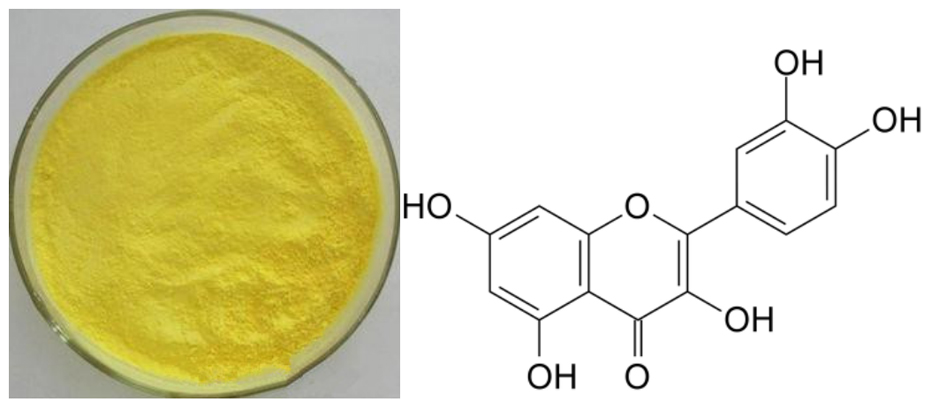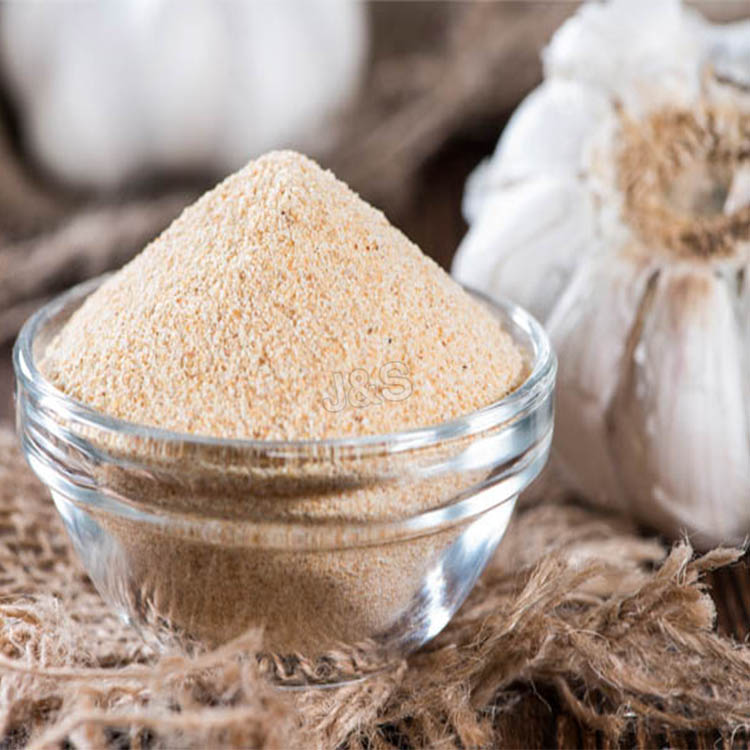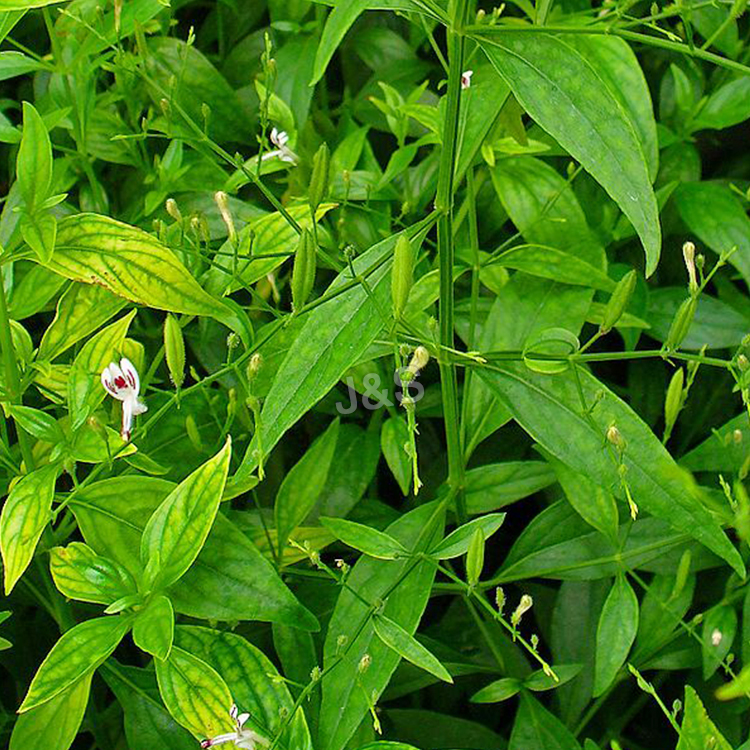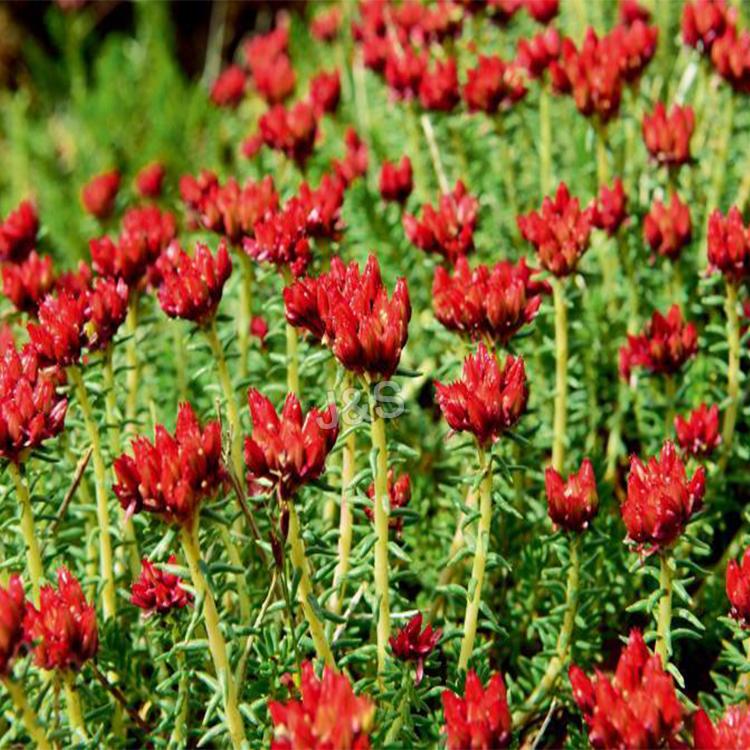8 Years Manufacturer Quercetin Factory in Denmark
8 Years Manufacturer Quercetin Factory in Denmark Detail:
[Latin Name] Sophora Japonica L
[Plant Source] from China
[Specifications] 90%-99%
[Appearance] Yellow crystalline powder
Plant Part Used:Bud
[Particle size] 80 Mesh
[Loss on drying] ≤12.0%
[Heavy Metal] ≤10PPM
[Storage] Store in cool & dry area, keep away from the direct light and heat.
[Shelf life] 24 Months
[Package] Packed in paper-drums and two plastic-bags inside.
[Net weight] 25kgs/drum
Brief Introduction
Quercetin is a plant pigment (flavonoid). It is found in many plants and foods, such as red wine, onions, green tea, apples, berries, Ginkgo biloba, St. John’s wort, American elder, and others. Buckwheat tea has a large amount of quercetin. People use quercetin as a medicine.
Quercetin is used for treating conditions of the heart and blood vessels including “hardening of the arteries” (atherosclerosis), high cholesterol, heart disease, and circulation problems. It is also used for diabetes, cataracts, hay fever, peptic ulcer, schizophrenia, inflammation, asthma, gout, viral infections, chronic fatigue syndrome (CFS), preventing cancer, and for treating chronic infections of the prostate. Quercetin is also used to increase endurance and improve athletic performance.
Main Function
1.Quercetin may expel phlegm and arrest coughing, it can also be used as anti-asthmatic.
2. Quercetin has anticancer activity, inhibits PI3-kinase activity and slightly inhibits PIP Kinase activity, reduces cancer cell growth via type II estrogen receptors.
3.Quercetin may inhibit histamine release from basophils and mast cells.
4. Quercetin may control the spread of certain viruses within the body.
5, Quercetin may help reduce tissue destruction.
6.Quercetin may also be beneficial in the treatment of dysentery, gout, and psoriasis
Product detail pictures:
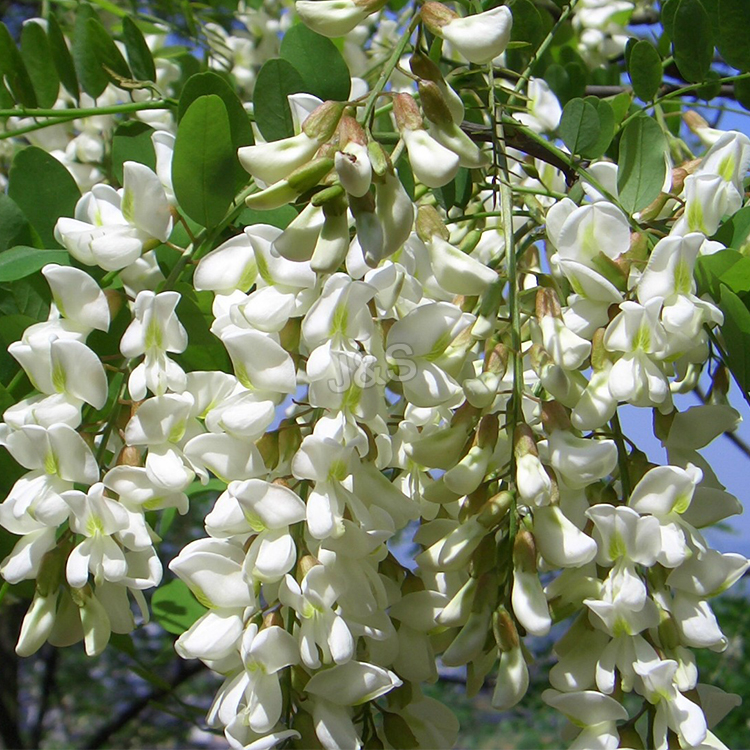
Related Product Guide:
Dependable high-quality and fantastic credit standing are our principles, which will help us at a top-ranking position. Adhering to your tenet of "quality very first, client supreme" for 8 Years Manufacturer Quercetin Factory in Denmark , The product will supply to all over the world, such as: Jersey, Hyderabad, Sydney, We have a good reputation for stable quality products, well received by customers at home and abroad. Our company would be guided by the idea of "Standing in Domestic Markets, Walking into International Markets". We sincerely hope that we could do business with car manufacturers, auto part buyers and the majority of colleagues both at home and abroad. We expect sincere cooperation and common development!
“Equine Polysaccharide Storage Myopathy” is an inheritable glycogen storage disease of horses that causes exertional rhabdomyolysis. It is most commonly associated with heavy horse breeds and the American Quarter Horse. While incurable, PSSM can be managed with appropriate diet and exercise. There are currently 2 subtypes, known as Type 1 PSSM and Type 2 PSSM.
Glycogen is a molecular polymer of glucose used to store energy, and is important for maintaining glucose hemostasis in the blood, as well as for providing energy for skeletal muscle and cardiac muscle contraction. Molecules of glucose are linked into linear chains by α-1,4-glycosidic bonds. Additionally, branches of glucose are formed off of the chain by α-1,6-glycosidic bonds. 2 molecules of glucose are joined into an α-1,4-glycosidic bonds by an enzyme known as glycogen synthase. This bond may be broken by amylase when the body wishes to break down glycogen into glucose for energy. Glycogen branching enzyme is responsible for the required α-1,6-glycosidic bonds needed to start a branch off of these linear chains.
Any disruption to this system results in a glycogen storage disease. There are currently 3 subcategories of glycogen storage diseases in horses: Type 1 Polysaccharide Storage Myopathy, Glycogen Branching Enzyme Deficiency , and Type 2 Polysaccharide Storage Myopathy.
Type 1 PSSM is caused by an autosomal dominant genetic mutation known as GSY1. This mutation causes an up-regulation of glycogen synthase, and high levels of glycogen synthase relative to glycogen branching enzyme . This altered ratio of glycogen synthase to GBE results in glycogen molecules with long chains and few branches, making these molecules somewhat amylase resistant. The GSY1 mutation is associated with altered glucose metabolism , as well as accumulation of high levels of glycogen and abnormal polysaccharide in the muscles of the horse. Additionally, some horses have been shown to have insulin sensitivity, which improves glucose uptake by muscle cells and contributes to excessive glycogen storage that is already elevated secondary to the GSY1 mutation.
Wiz Science™ is “the” learning channel for children and all ages.
SUBSCRIBE TODAY
Disclaimer: This video is for your information only. The author or publisher does not guarantee the accuracy of the content presented in this video. USE AT YOUR OWN RISK.
Background Music:
“The Place Inside” by Silent Partner (royalty-free) from YouTube Audio Library.
This video uses material/images from https://en.wikipedia.org/wiki/Equine+polysaccharide+storage+myopathy, which is released under Creative Commons Attribution-Share-Alike License 3.0 https://creativecommons.org/licenses/by-sa/3.0/ . This video is licensed under Creative Commons Attribution-Share-Alike License 3.0 https://creativecommons.org/licenses/by-sa/3.0/ . To reuse/adapt the content in your own work, you must comply with the license terms.
https://www.foodbev.com — Inga Haubold from Wild talks to Andreas Exarheas about global flavour trends and the company’s new cherry flavours. The interview took place at Anuga 2013 in Cologne, Germany. Produced by Shaun Weston. Intro audio is ‘Locally Sourced’, which is licensed by YouTube for free use.
The company leader recept us warmly, through a meticulous and thorough discussion, we signed a purchase order. Hope to cooperate smoothly
